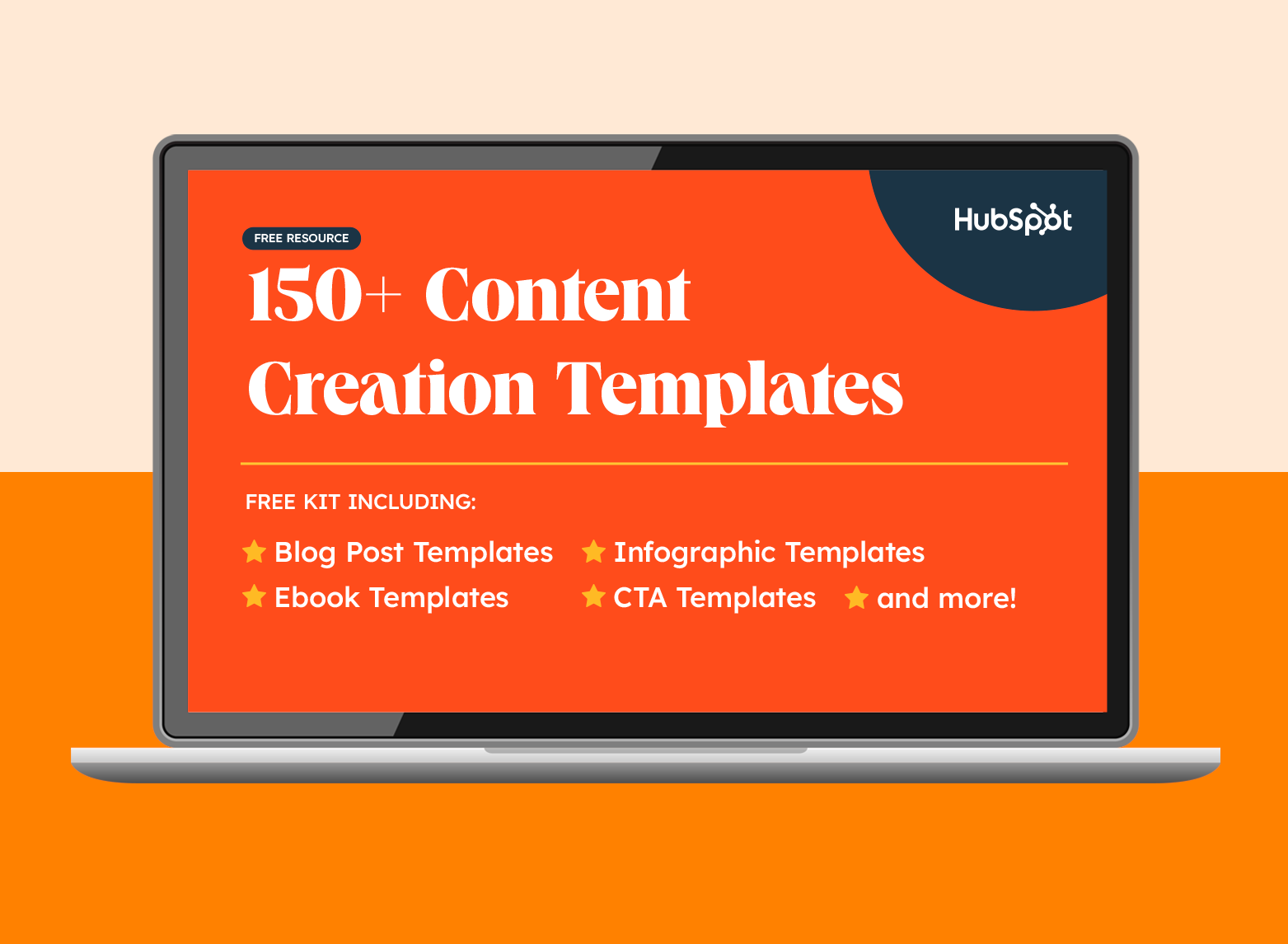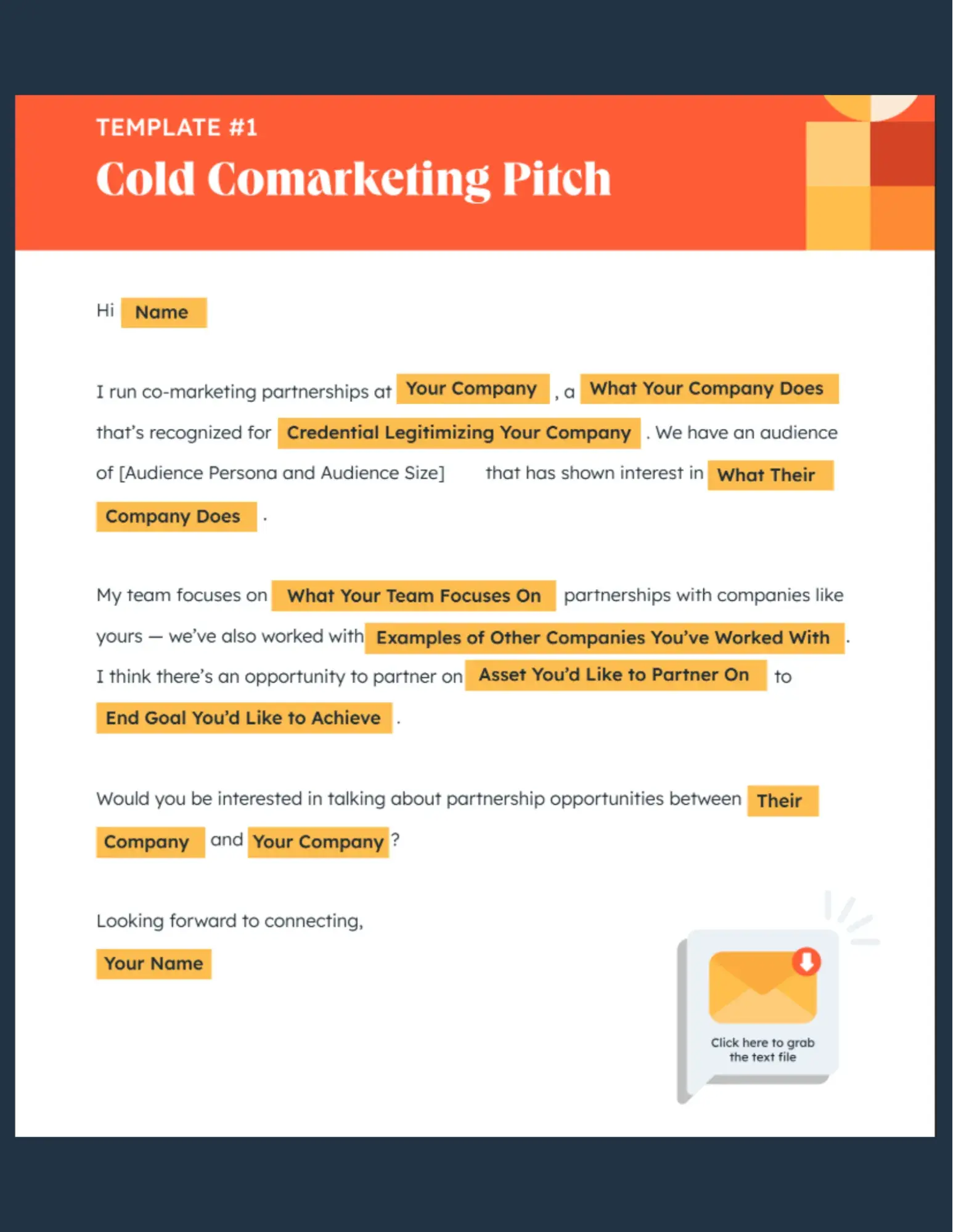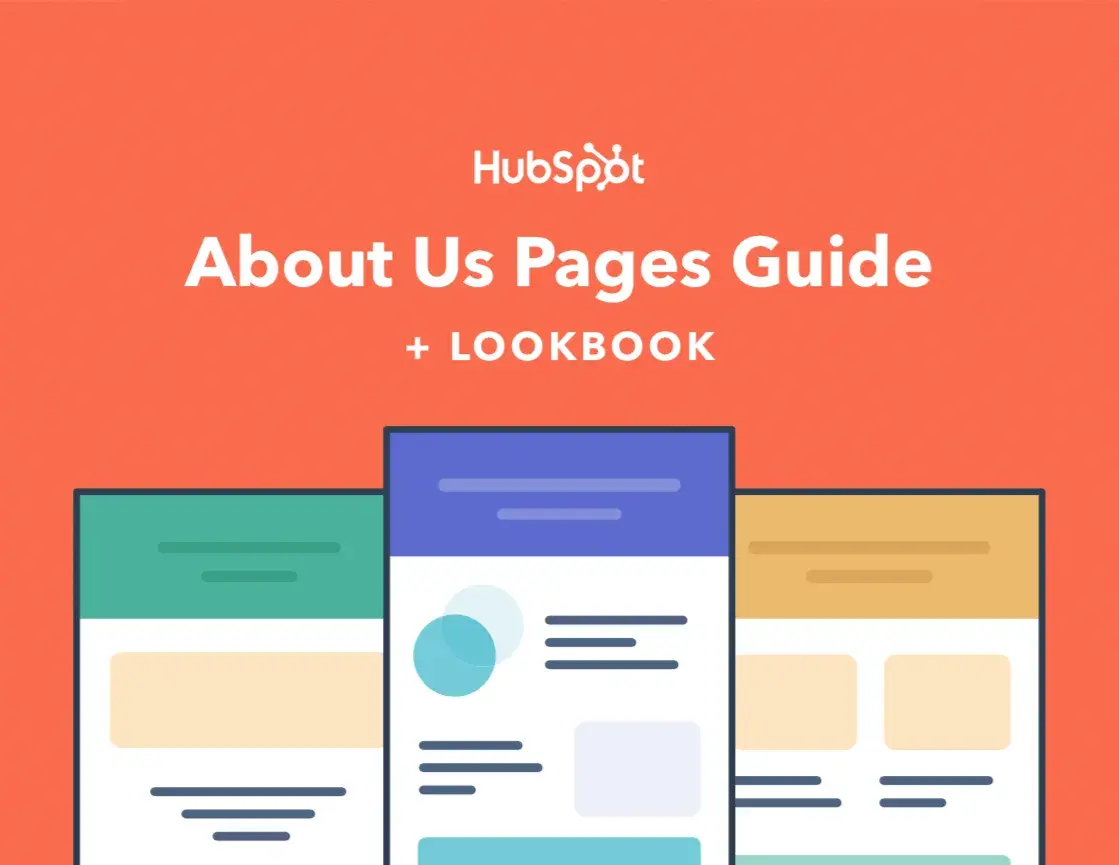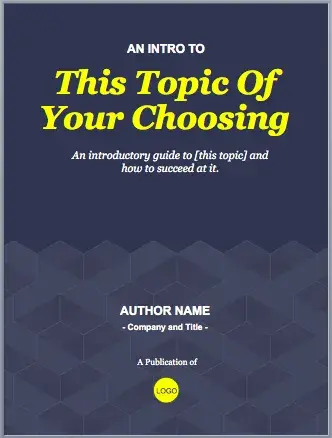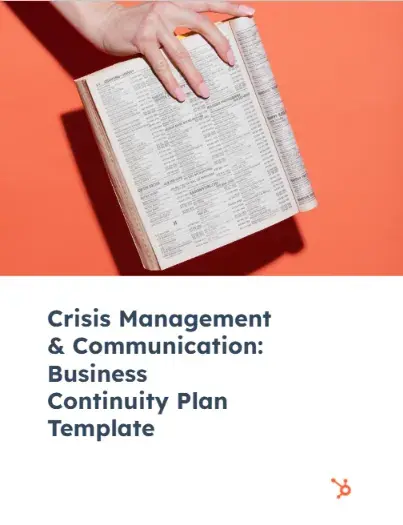Copywriting demands creativity, inspiration, and hard work, and it can be difficult to consistently find all three. That’s why I’ve compiled a list of my favorite copywriting templates for a variety of scenarios. Let’s get started.
Table of Contents
Copywriting Tips: How to Get Started
As a marketer for the last 20+ years, I’ve learned that having a framework is immensely helpful when it comes to writing copy. In my opinion, there’s nothing worse than a blank page with a blinking cursor. More than once, I’ve found myself writing things like “Heading About XYZ” or “words go here” just to get something on the page. It’s actually a strategy I’ve taught other copywriters to get them rolling.
In fact, I’ve often said, “It’s easier to have something to edit than to write from scratch.” That’s exactly what copywriting templates do — provide a framework for writing a first draft, no matter how messy or crappy. From there, it’s “just” about editing.
I put “just” in quotation marks because it’s never quite that simple, and you still have to know five things:
- Who is receiving your piece? It’s important to know your audience, so you can tailor your message to their needs.
- What should they know? You must identify the key takeaways you want them to walk away with before you start writing to ensure they flow in naturally.
- What action do you want them to take? Do you want them to click, call, email, buy? Understanding that makes it easier to guide them to the action you’re taking
- Where will they be reading it? Format matters. An email has a different engagement and structure than a social post or blog post.
- Why should they care? What’s in it for them? How does your content make them better, stronger, or faster? When you can tap into what stands up to make them take notice, your results will improve.
Once you can answer those questions and have chosen one of the templates below, you can start writing. (Or you can feed the information and templates into our AI Content Writer or your favorite AI copywriting tool to shorten the process and get to that editable first draft much faster.) I’ve considered the types of emails marketers and salespeople are likely to send repeatedly and crafted templates that can help eliminate that time.
With that in mind, let’s dive in.
32 Copywriting Templates to Use in Marketing
- Email Marketing Copywriting Templates
- Cold Email Copywriting Templates
- Blog Copywriting Templates
- Social Media Copywriting Templates
- Website Copywriting Templates
- Sales Enablement & Informational Assets Copywriting Templates
- Copywriting Templates for Other Types of Communications
6 Email Marketing Copywriting Templates
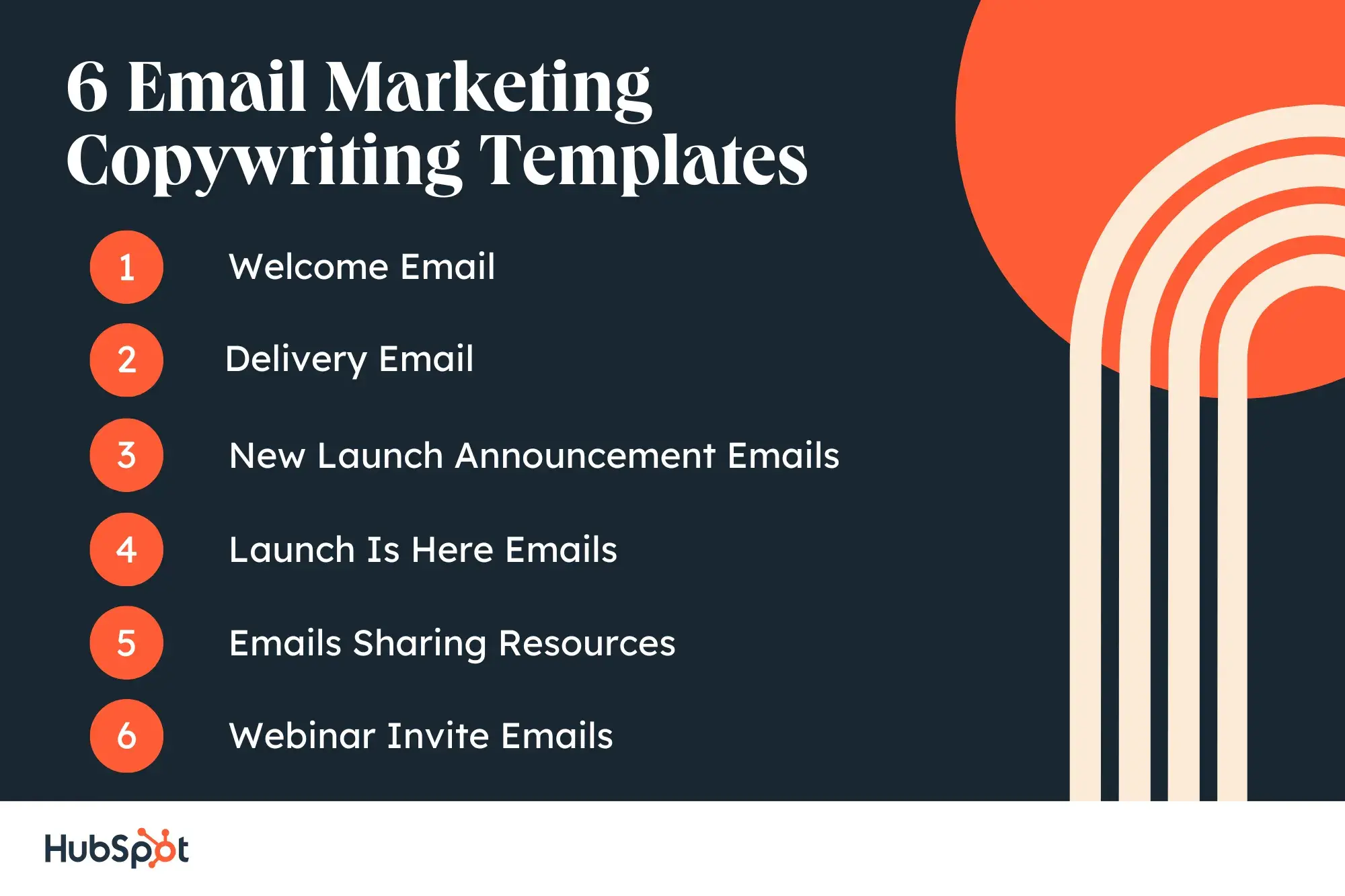
Email marketing, how do I love thee, let me count the ways. Seriously. I didn’t set out to be an email copywriter or strategist, but that’s exactly what I have become.
I have clients who I work with on hundreds of emails every year and others who I set strategy for and sometimes implement. In fact, I’ve set up and managed an internal marketing agency for a client with a variety of different programs and audiences. I love it!
With that in mind, here are several email copywriting templates that I love.
1. Welcome Email
Best for: A simple email welcoming people to your list.
First impressions count. When you send that first email after someone has signed up for your email list, you want it to be warm, informative, and set expectations for further communication.
Here’s an example of a template you might use to welcome new subscribers to your newsletter:
Hi [First Name],
Thank you for signing up for [include what someone just signed up for, like a blog subscription, newsletter subscription, company services, etc.]
At [Company Name], we’re working to [list a few of your company’s core goals or include your mission statement]. We highly encourage you to check out [suggest a few recommendations so the reader can continue learning more about your company].
You can expect to hear from us [include reasonable expected frequency].
If you ever have any questions, please feel free to contact us at [Contact information].
Thank you,
[Company Name, or individual sender’s name]
Featured Resource: 15 Email Templates for Marketing and Sales
2. Delivery Email
Best for: Delivering a lead magnet that your audience has requested.
Lead magnets have been one of the strongest, most effective strategies for building email lists for service-based businesses. While there are other great strategies out there, I feel strongly that lead magnets will continue to be a great solution for list growth.
Whether you’ve promised a PDF, video, or something entirely different, it’s important to actually send it. While similar in many ways to a welcome email, there are some distinct differences you’ll note in this copywriting template.
Here’s a sample of what you might say:
Hi [First Name],
Your [Lead Magnet Name] is here! I created it to help [audience information] like you solve [XYZ problem.]
[Give them a high-level overview of what’s included and any notes on how to use it.]
Download the [Name of Lead Magnet] (or Watch the video).
Now that you’ve got what you came here for, I wanted to introduce myself/my company. [Describe who you are and who you help].
If you have questions, don’t hesitate to reach out. And, if you’re wondering what to do after you [watch, read, listen] to [Lead Magnet Name], you can [list next action they can take — either free or paid].
Looking forward to connecting with you!
[Signature]
3. New Launch Announcement Emails
Best for: Building buzz about an upcoming change or new product.
Doing something different? Your audience won’t know about it if you don’t tell them! Announcement emails are one of the best ways to build a buzz and spread the news.
Whether you’ve got a new catalog, are offering a new product or service, or are even launching a rebrand or new website, you need to share the news.
You’re excited about it, sure — but to make your announcement email successful, you’ve got to show your audience why they should be excited about it.
This email should be dropped 1-2 weeks before the new thing to build buzz and to ensure that any changes don’t take them by surprise. If a new catalog, you may be able to simply drop that as soon as it’s available — but, if you’re discontinuing any items, an early heads-up gives your audience a chance to stock up.
Use this copywriting template as a starting point:
Hi [First Name],
Big news! [Explain what it is]
And here’s what that means for you — [Explain what it means in terms of benefits for them — focus on the positive here.]
You can [take advantage of | enroll in | experience | try out] the new [product/service name] as soon as [tentative launch date].
This is just a heads-up, and there is no need to take action just yet. [Or if you want to build a waiting list, say something like: “If you want to be first on the list to get access, click here or hit reply.”]
If you have any questions in the meantime, don’t hesitate to reach out.
Back to you soon!
[Signature]
4. Launch Is Here Emails
Best for: Following up on your launch announcement emails and getting audience buy-in.
If you followed my copywriting template for dropping a launch announcement email at the start of your launch runway, now it’s time to announce that your launch is here.
Here’s what that could look like for you:
Hi [First Name],
It’s here. The new [name/type of new thing].
[Describe what it is]
And here’s what you can expect moving forward: [If benefits to audience, list in bullets below. If not, just add a quick sentence about what that means for them.]
- [Feature #1] so you can [benefit #1]
- [Feature #2] so you can [benefit #2]
- [Feature #3] so you can [benefit #3]
[If mandatory: Now that we’re live, your next step is to … (describe next step)]
[If optional: Ready to dive in? All you have to do is … (describe next step)]
Have questions? Reach out and ask!
I’ll/We’ll be in touch soon with the next update!
[Signature]
5. Emails Sharing Resources
Best for: Notifying your audience about new resources or timely ways to solve their problems.
I can’t tell you how many times I’ve seen it — people invest heavily in creating a resource before they make it available … and then they tell no one, so it languishes in a forgotten corner of the internet.
Whether we’re talking blogs, sales & marketing assets (check out the copywriting templates below), videos, or something else — a lot of time and energy goes into developing resources. To truly ensure they pay off — and just as importantly, help your audience solve their problems — you’ve got to market the resource.
And if it solves a cyclical problem, it means you have a seasonal opportunity to reshare it and tie it to sales goals.
Here’s a copywriting template you can use:
Hi [First Name],
One of the questions we hear most from [describe audience] like you is “How do we … [adapt question to your audience.]”
We get it. [Symptom of problem] can stop you in your tracks. But you’re not in this alone. We [wrote/recorded/created] something to help.
[Describe what it is]
Ready to dive in?
[Read/Watch/Listen] here. (link to resource)
Need help solving or troubleshooting? We’ve got your back. Whether you need help identifying the right product for your needs, guidance on your next steps, or technical support, we’re here. Just call [###-###-####] or hit reply to this email.
[Problem or symptom of problem] doesn’t have to be your problem anymore.
Warm Regards,
[Signature]
P.S. Want some additional resources? Check out [link name] to learn more.
6. Webinar Invite Emails
Best for: Spreading the news about a training and getting people to show up.
Events are one of the best ways to reach additional audiences. But there’s nothing worse than putting a ton of time and effort into creating your event, only for no one to show up. Been there, done that, got the t-shirt, don’t want to do it again.
There are several event marketing strategies out there, but my favorite is a simple email — it’s easy to write and send. And, you can continue to send additional emails out to people on your list who don’t register using the same copywriting template by changing the subject line and intro text.
Most importantly, make sure to show your audience what’s in it for them and why they should attend.
Here’s what that could look like:
Hi [First Name],
You’re invited …
We’re hosting a [free/paid] training to help you [describe the problem you’re solving].
[Explain why you created training - 1-2 sentences]
When you join us, you’ll walk away:
- [Takeaway #1]
- [Takeaway #2]
- [Takeaway #3]
Sound like something that can help you? Here are the details
Event Name:
Date:
Time:
[Button:] Save Your Seat Here
[If the recording will be available: Can’t attend live? No problem. The recording will be available after the call.]
Truly hope to see you on [date].
Warm Regards,
[Signature]
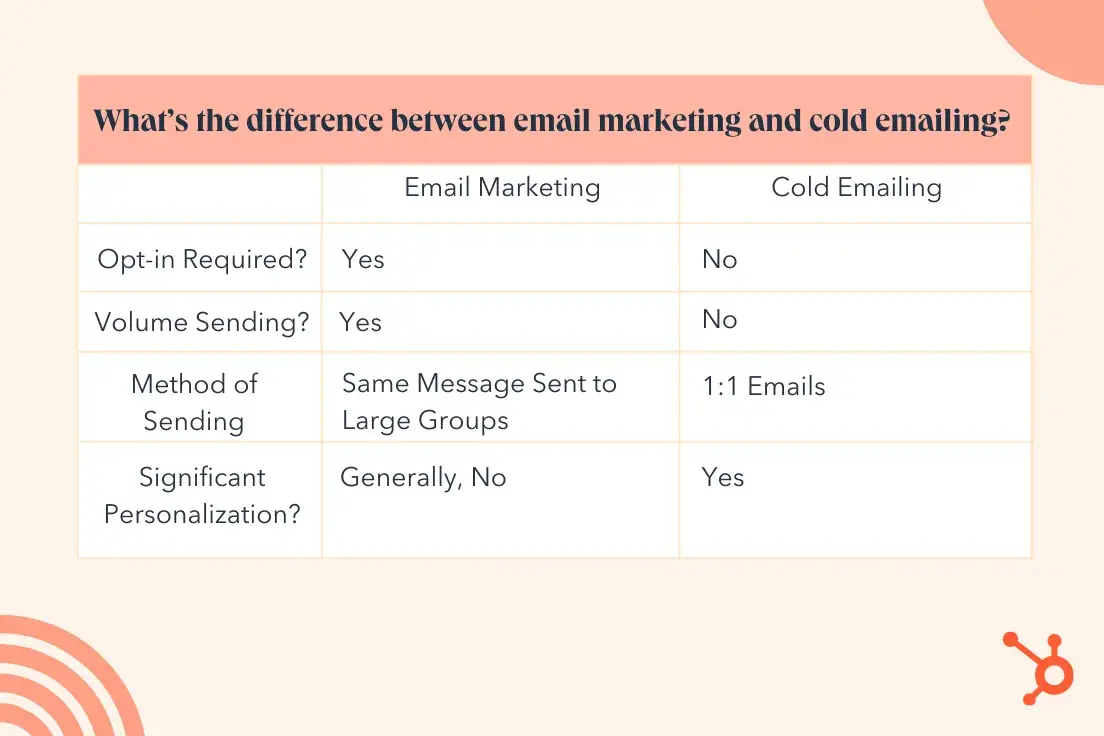
4 Cold Email Copywriting Templates
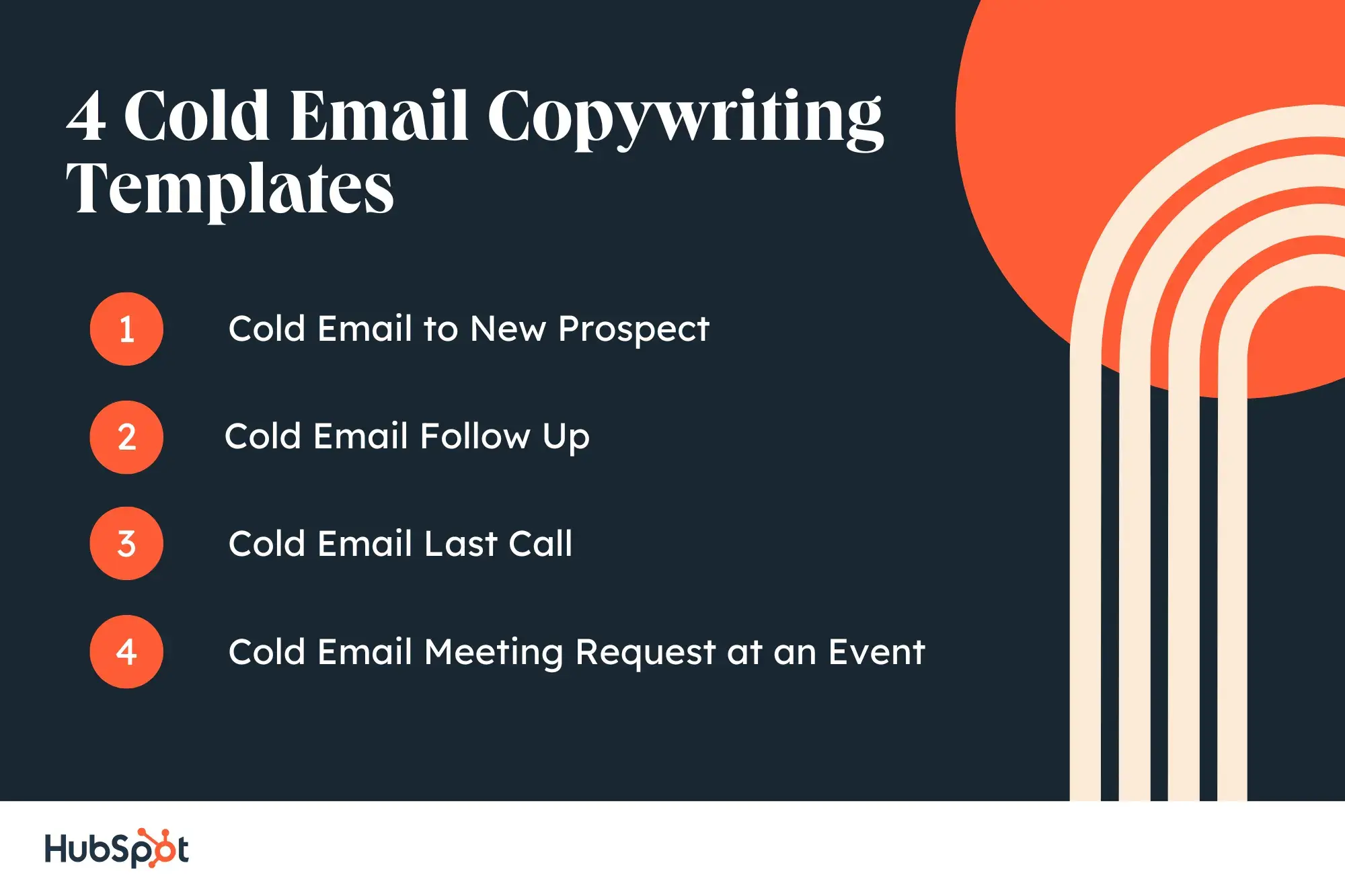
No one likes cold pitching. Strike that — some people absolutely LOVE cold pitching. I, however, am not one of them. Personally, I’d rather start a conversation or a friendship and go from there — which is definitely the long game.
However, done right, cold emails can lead to those conversations and be extremely effective.
Just know that cold email has much lower open and conversion rates than email marketing campaigns do.
What’s more, there are some restrictions around who you can send cold emails to — some are legal in nature, others are driven by ESP (email service provider) terms of service. Make sure you know what you can (and can’t) do before you start sending cold emails — check out these best practices.
Before you start writing, keep a few rules in mind:
- Emails should be short, sweet, and to the point — 100 words is a long, cold email.
- Speak to their problem — show them what’s in it for them
- Include a low-risk ask that’s easy to say yes to without requiring a significant commitment on their part
7. Cold Email to New Prospect
Best for: Introducing yourself to a new prospective client.
There’s an art to introducing yourself via cold email — you want to be warm and engaging without waxing overly poetic. Why? Cold emails are the equivalent of a door-to-door salesperson.
You have a few words to get a foot in the door and invite them to a later conversation. With that in mind, I caution you to use them wisely.
Hi [First Name],
I’m [Your Name] with [Company Name], and my team and I help [describe audience] solve [describe problem you help them solve]. [Describe your products or offerings, and why they’re beneficial to audience — one sentence only.]
[Ask the question — Can I send you a catalog or spec sheet? Would this be worth a quick call? Can you tell me more about how you use X products?]
Best, [Your Name]
8. Cold Email Follow Up
Best for: Following up on the last email.
Do not — and I repeat — do not send emails to your cold audience asking “Did ya get my last email?” There’s a good chance they did and they ignored it. And just because you’ve emailed them once, it does not make them a warm audience. They are still cold until they engage.
However, just because they didn’t respond, it doesn’t mean that you can’t follow up. I’ve discovered that this sales adage is true: “The fortune is in the follow up.”
It just means that you’ve got to follow up the smart way. So what’s that? Offer additional information or a new angle to look at what you’ve shared already. It’s totally fine to mention you reached out recently — just don’t bug them about it or waste valuable email inbox real estate harping on the fact that they haven’t responded yet.
I’d encourage you to use something like this copywriting template for your cold follow-up:
Hi [First Name],
Since I first reached out a few weeks ago about [what you reached out for], we’ve [released some new information or a new catalog, published a new blog or case study]. You might find it helpful/interesting, so I wanted to share it with you. Check it out here (link).
Would it be worth a short chat to discuss [how we can help/product name can help]?
Best,
[Your Name]
9. Cold Email Last Call
Best for: A last-ditch effort to get a response from someone you’ve been reaching out to.
You may have heard that a 9-word email is a great way to get a response. However, the 9-word email is dependent on some level of familiarity with the person. Usually, this copywriting template is used to breathe new life into cold leads.
The 9-word email usually is [First Name], [short, direct question]?
Here are a few examples of what this looks like:
- Jane, are you still interested in learning self-defense?
- Bob, did you hire a coach to scale your business?
- Chris, are you still looking for a technical writer?
So how can you adapt the 9-word email to cold outreach? Short answer? You take out the implied background knowledge. If they’re a cold contact, you probably have no idea if they’re looking to do something in the first place, let alone if they’re “still” looking for it.
Give it a shot using this copywriting template. Note, I always use the word “Hi,” and I nearly always add in something to soften it. “I’ve got some ideas for you” plants the seed and if they’re interested, there’s a good chance they’ll be interested in learning more.
Hi [First Name], are you [interested in/looking for] a [solution/way/person] to [outcome]?
I’ve got some ideas for you.
—[Your Name]
10. Cold Email Meeting Request at an Event
Best for: Starting conversations with people likely to attend an event.
I know I just said cold emails should come with a low-friction ask. It’s one thing to ask “Would it be worth a call?” and another to ask them to buy a costly strategy session or spend an hour of their time on the phone with you.
Live events and conferences are about the only exception to that rule I can think of. Why? The whole point of attending is to meet people and learn new things.
So, if you have a list of people who are attending (or are likely to attend), the conference is the perfect “newsworthy” opportunity to invite them to talk to you. I say newsworthy because it’s a timely angle and reason to reach out, even if you’ve sent the Last Call copywriting template above.
Remember, unless people opt in, you can’t send email marketing messages — but you can do follow ups or invites 1:1 through cold tactics.
Here’s how I’d do this:
Hey [First Name],
Headed to [Event Name, Event Dates]? I’ll be there [at Booth # if you have a booth/the whole time/on specific dates]. If you’re going, I’d love to connect with you.
[List the things you’re doing, will have at the booth, are hoping to learn.]
Would you be up for a conversation while we’re there? If so, grab a time on my calendar here. [link to booking link]
If you’re not sure if you’re attending yet or your schedule is up in the air, I’d still love to chat with you. Just hit reply so I know to follow up and set up a time that works for both of us.
Best,
[Your Name]
4 Blog Copywriting Templates
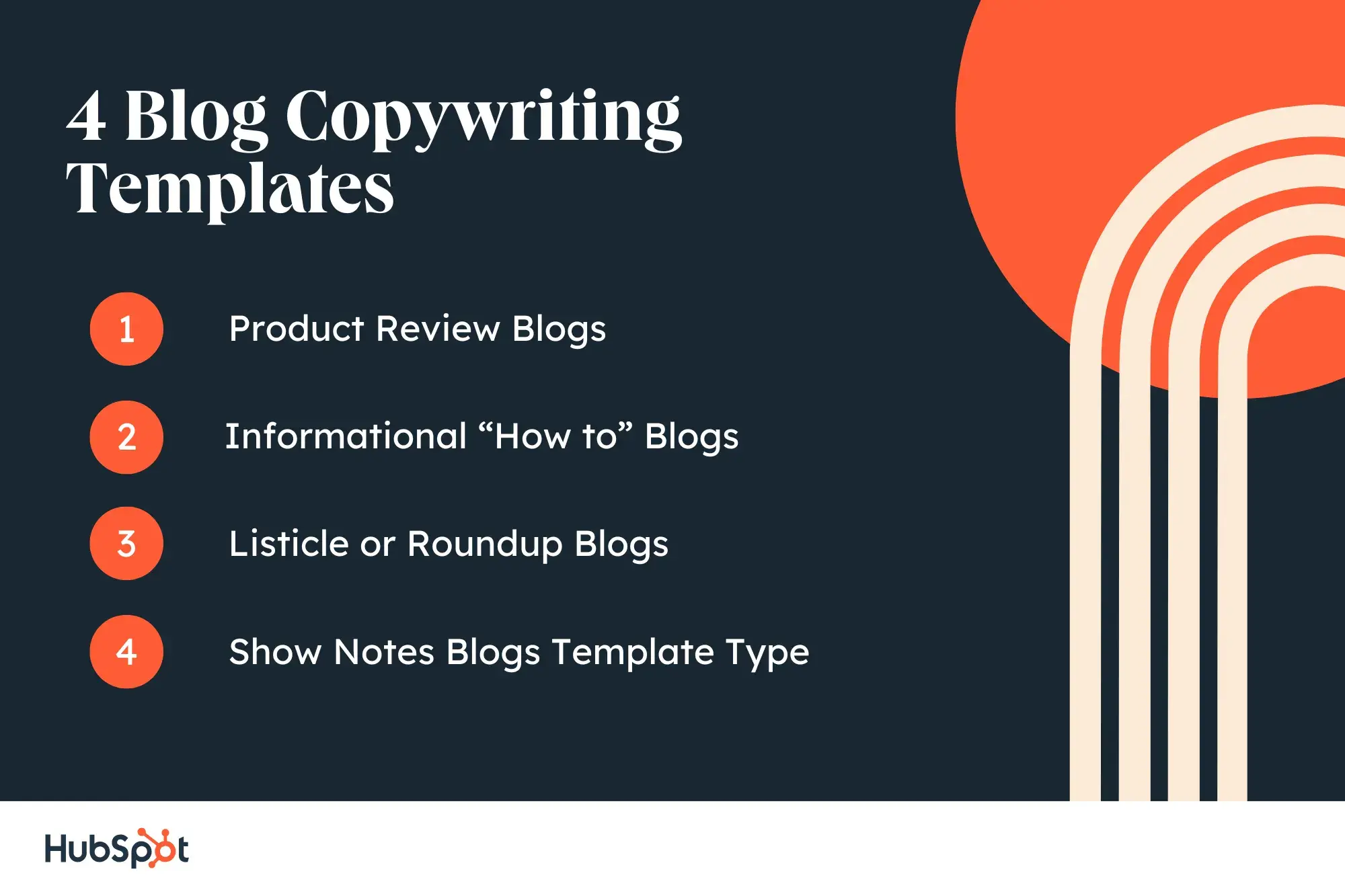
11. Product Review Blogs
Best for: Informational blogs and product reviews to educate your audience.
Blogs give copywriters a chance to dive deeper into topics in a way that isn’t captured through emails, ads, or social media posts. There are so many different types of blogs you might write, so be sure to develop your blog strategy to keep a close eye on what types of blog posts and topics perform best for your business.
Since blogs tend to be longer than other types of copy, you want to make sure you’re keeping your audience engaged. Consider what your readers may want from your post, and focus on answering the topic-related questions they’ll most likely ask.
This blog post template is an example of a product or service review.
Title
Introduction
[Introduce the product/service you’re reviewing and relevant background information about the company and the product/service. Clearly state what the reader will gain from reading the post.]
Subheading
[Write a brief using keywords. Use headings throughout the post to break up the key sections of your post]
Body
[A few paragraphs will cover the bulk of the review here. If there are multiple features to the product/service, section them separately as you review. Be detailed and answer the questions you think your audience may have about the product or service.]
- How much did it cost?
- What is the functionality?
- How was the customer service?
- Are you recommending the product/service?
- Who would benefit from using the product/service?
Conclusion
[Wrap up your post with final thoughts and a CTA if you want readers to check out the product/service.]
Featured Resource: 30 Free Blog Post Templates
We’ve put together 30 essential blog post templates every marketer needs — from how-to posts to listicles.
12. Informational “How to” Blogs
Best for: Establishing expertise by solving a common problem and driving SEO traffic.
How-to blogs done right can be a labor of love, and I love them. Why? I love helping people and solving their problems — and that SEO traffic from people searching for “How to XYZ” is pretty sweet, too.
Using our AI Blog Writer tool can shorten the process, too, helping you truly share your knowledge and help your audience.
Title [Should be clear and actionable, speaking to what people will learn how to do.]
Introduction:
- 1 sentence hook that draws the reader in, talking about why it’s timely or important.
- Short overview that expands on the hook.
- Share your expertise and what qualifies you to talk about this.
- Offer a 1-2 sentence summary that states what people will walk away knowing how to do.
Subheadline outlining background information
- Define any important terms.
- Identify what people should know before reading on.
Subheadline: Step 1 - Describe Step
- Offer an overview of what this step is and why it’s important.
- Walk through how to do this step, piece-by-piece.
- Offer best practices, screenshots, or any information that could help.
Subheadline: Step 2, 3, 4, 5 etc - Describe Step
- Continue with this step and repeat for additional steps.
Subheadline: Common mistakes or pitfalls
- What can go wrong and how to avoid it.
Subheadline: Actionable Conclusion
- Clearly state the big takeaways.
- Share their next action.
- Offer final advice before people dig in.
- Provide a CTA.
13. Listicle or Roundup Blogs
Best for: Sharing quick insights and overviews to help people see all their options and make a choice.
Listicle blogs are fun because they offer an overview of a variety of options that the reader can then use to create a short list of whatever the listicle is covering — recipes, SaaS products, strategies, and more.
Give this copywriting template a try:
Title [Should include a number and speak to what you’re covering or rounding up.]
Introduction
- Grab attention with a surprising stat, bold claim, or relatable anecdote.
- Expand on the hook with 1-2 more sentences.
- Share an anecdote.
Subheadline: About [Topic you’re covering]
- Define any key terms.
- Share your expertise/experience.
- Provide any necessary context to set up the roundup.
Subheadline: List Item #1: [Item Name]
- Offer a short overview of why this matters.
- Go into detail about this.
- Offer links to relevant resources.
- Share any best practices or lessons learned.
Subheadline: List Items #2, 3, 4 etc.: [Item Name]
- Continue with similar format and points.
Subheadline: Bonus Tip!
- Share unexpected details to surprise and delight the audience.
Subheadline: How to choose
- Overview criteria for choosing and what to consider.
Subheadline: Actionable Conclusion
- Share key takeaways, lessons learned, and next steps.
- Don’t forget to include a CTA!
14. Show Notes Blogs Template Type
Best for: Podcasters or vloggers who want SEO-friendly show notes that drive traffic to their site and content.
The thing about YouTube and Apple Podcasts is that they’re great for getting eyes (or ears) on your stuff from their platforms. But you don’t have a lot of control over the format or information you include. There are a few options to customize, to be sure, but as someone who lives and breathes websites and content, I am a fan of using your own real estate to provide a better experience to your audience.
That’s where well-structured show notes come in. I’ve used this blog copywriting template a few times for show notes for my podcasts and live videos as well as guest appearances on other people’s shows. In addition to creating a catalog of your episodes and appearances on your site, there is great SEO value, and again, the opportunity to control your digital channels.
Try it out yourself:
Title [Should be clear and engaging, summarizing the key topic of the episode. (Example: “How to Build an Email List That Converts – [Podcast Name] Episode #25”)]
Introduction
- Give the short marketing version of what the video or audio recording covers — this is usually what appears on the YouTube or podcast description.
- List guest names and areas of expertise.
- List what people will learn.
Subheadline: Listen to [Episode # and Name]
- Embed audio or video.
Subheadline: Episode Highlights
- Share your favorite parts of the podcast.
- Offer a Timestamped breakdown of specific topics.
Subheadline: Top Takeaways
- Summarize the most important takeaways from the episode.
Subheadline: Resources & Mentions
- List any links, tools, books, or references mentioned in the episode.
Subheadline: What’s Next
- Tease the next episode if relevant.
- Share a CTA.
6 Social Media Copywriting Templates
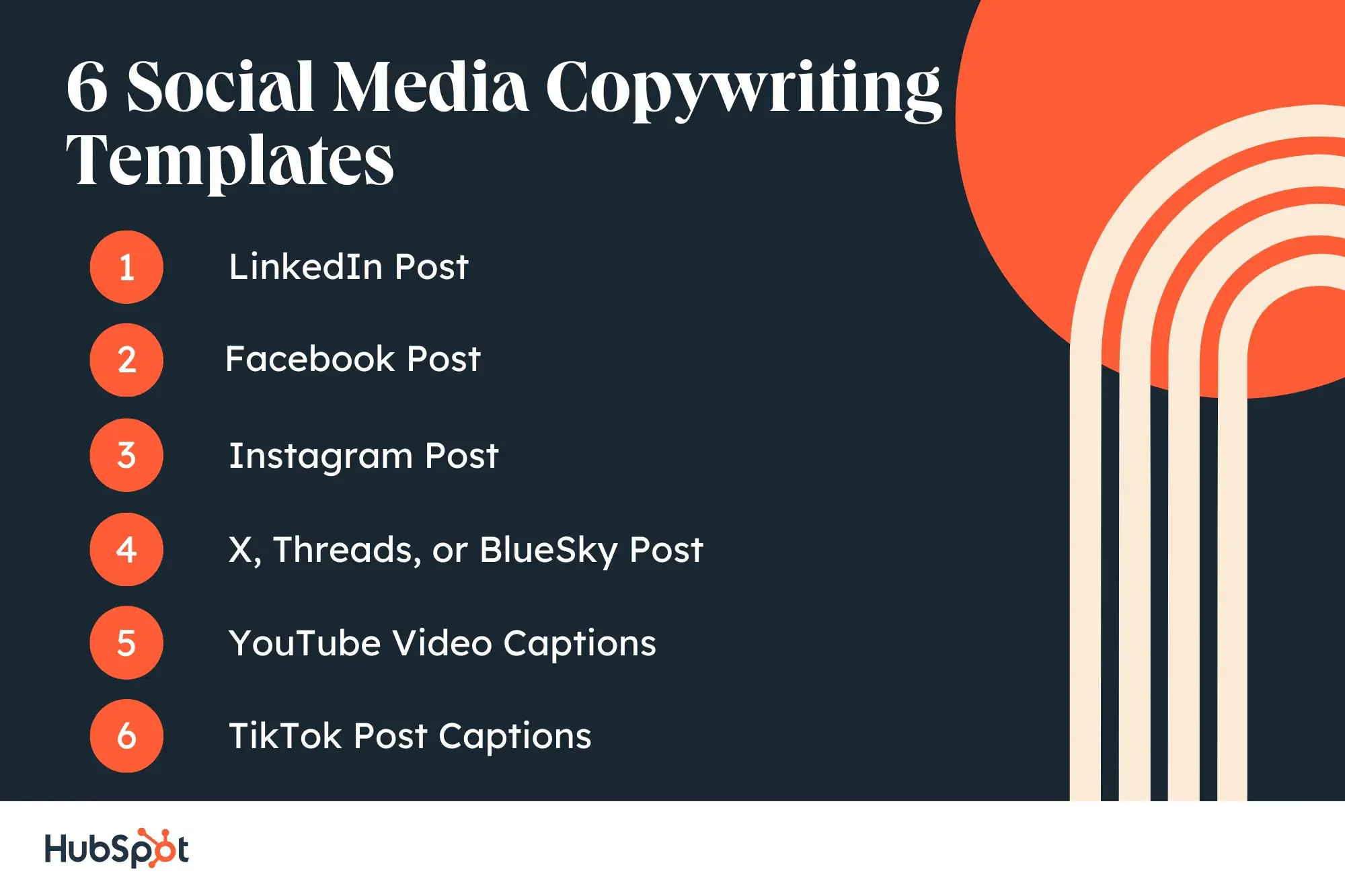
Writing copy for social media depends on the social platform. If you’re writing for X or BlueSky, you have a strict character count, so the copy has to be brief but still appealing enough to get the attention of someone scrolling.
Similar to X, Instagram is known for catchy captions. Character count isn’t as much of a concern on Instagram. However, since the social media powerhouse is visually oriented, you’ll want to write a caption that echoes the image or video in a post.
Overall, the primary goal when copywriting for social media is to thoroughly understand the key differences among the social media platforms.
15. LinkedIn Post
Best for: Business owners, marketers, and thought leaders who want engaging, high-impact LinkedIn posts that drive interaction and build authority.
I love LinkedIn. It’s my favorite platform, and I’ve built a community over there.
However, most people I talk to run into two problems:
- First, lots of people treat LinkedIn like a resume board, only focusing on getting or posting jobs.
- Second, in a bid to stand out, lots of people are busy trying to show up as experts, without actually engaging with others.
The real magic happens when you use it to start conversations. Like other platforms, you have to know how to play to the algorithm, which rewards engagement with more engagement or at least more eyes on your content.
Your posts should have a strong scroll-stopping hook, followed by 1-2 sentence paragraphs, a few bullets (arrows like this can be great →), and a CTA of sorts. Instead of being clinical, focus on something that people care about — a little controversy is okay, and go forth and write.
Here’s a LinkedIn copywriting template:
Start with a hook — a bold statement, question, or surprising fact to grab attention.
E.g., “What would you tell a college student interested in your career?”
Offer context by expanding on that hook.
E.g., “A friend recently invited me to speak to her class. So I started thinking about what I’d tell them.”
Share a few insights or takeaways, 3-5 is good.
“#1 - Takeaway + Description”
A CTA that encourages interaction and discussion.
E.g., “What about you? Anything you’d change or add?”
Featured Resource: Social Media Templates
16. Facebook Post
Best for: Building community and driving engagement with your audience.
Facebook is about connection and conversation. Unlike fast-moving platforms like X (Twitter) or TikTok, posts here have longer visibility — meaning strong storytelling, engagement hooks, and CTAs can keep the conversation going for days.
While many people I know are moving away from Facebook in an effort to be less connected, it’s still a great way to reach your people.
Here’s a copywriting template for Facebook:
Start with a hook — usually a bold statement or question:“Ever wonder why most people fail at [topic]?
Continue expanding on the hook, keeping it relatable and conversational: When I first started, I thought [X] was the key. Turns out, I was missing [Y]. Here’s what changed everything.
Share takeaways or lessons in bullet points.
Include a CTA: [Sign up here. Tag a friend who needs to see this.]
Looking for Facebook Ad Copy Templates? Check out our AI Facebook Ad Copy Generator.
17. Instagram Post
Best for: Brands and businesses who want to create written content that enhances their visuals for more engagement.
Instagram is all about those visuals. But the words matter too. While your Instagram strategy likely depends on who your audience is and your industry, a good caption goes a long way toward growing your engagement.
Start with a short, punchy line that makes people tap “more.” Feel free to use emojis.
“Most businesses get this wrong. Are you making the same mistake? 👀”
Keep your sentences short and casual. “I used to think [mistake]. But here’s what actually works ⬇️”
Share quick insights as bullets using emojis instead of arrows. “📌 Tip #1: [Quick insight]”
Share a CTA:
Engagement CTA: “Double tap if you agree! ❤️”
Comment CTA: “Tell me — have you experienced this too?”
Next Step CTA: “See link in bio to save your seat.”
18. X, Threads, or BlueSky Post
Best for: Short, engaging content that sparks conversation.
Twitter was never really my place — makes sense, since I’m not a short form kind of person. When it switched to X, I started looking for alternatives and jumped onto Threads as soon as it launched.
Then, when BlueSky started to become more popular, I dove in there, where I have approximately one post, which says something like, “I’m not caffeinated enough for a short, hot take.”
But, there are HUGE communities that have grown from these short-form content machines. Here is a copywriting template you can use to get started — just keep in mind that you have extremely limited character counts, and you’re going for max impact right off the bat.
And of course, if you need to expand, you can create threads.
Most people fail at [thing] because they ignore [thing].
I did too, until I figured out what finally worked.
#1 - Don’t [what to avoid].#2 - Do [what to focus on].#3 - Ignore [what to ignore].
What’s your take?
19. YouTube Video Captions
Best for: Video creators who want more eyes on their past videos and to keep subscribers engaged.
YouTube is for videos, so why are we talking words? Because, at its core, YouTube is also a search engine, and you can optimize it for SEO just like you’d optimize a blog post.
But that’s not your YouTube video description’s only job. You also have to compel people to watch, and that means that you need a bright, compelling video cover, too. Note: Your video cover doesn’t have to match your video title.

Here’s a copywriting template you can use for your cover image, video title, and caption:
Video Cover [Should be bright with big, bold text, 5-8 words max.]
“STOP Doing This!! [one-word] Growth Hack!”
Video Title: Descriptive and focused on keywords. Here are a few options:
- # + Powerful Descriptor + Keyword: “9 Underrated Strategies to Grow Your Business”
- Big Promise: “3x Your ROAS with TikTok Lead Ads”
- Curiosity: How to get 1,000 subscribers fast (no ads!)
Video Description:
- Opening hook should summarize what the video is about and include your keywords: “Want to grow your YouTube channel fast? In this video, I break down the three strategies that helped me reach 100K subscribers in just six months!”
- Share Timestamps to help your viewers jump to key moments and help them know what’s coming.
- Links and Resources.
- CTA: “Like, Comment, and Subscribe.”
20. TikTok Post Captions
Best for: Short-form content creators who want people to stop scrolling and watch.
On TikTok, your caption needs to work fast. Short, engaging, and curiosity-driven captions get more interactions. Plus, the right description helps your video get discovered.
Here’s a quick copywriting template you can use for your TikTok captions:
Stop doing this if you want to [goal].
You can avoid where most people screw up by [one sentence, two max]
4 Website Copywriting Templates
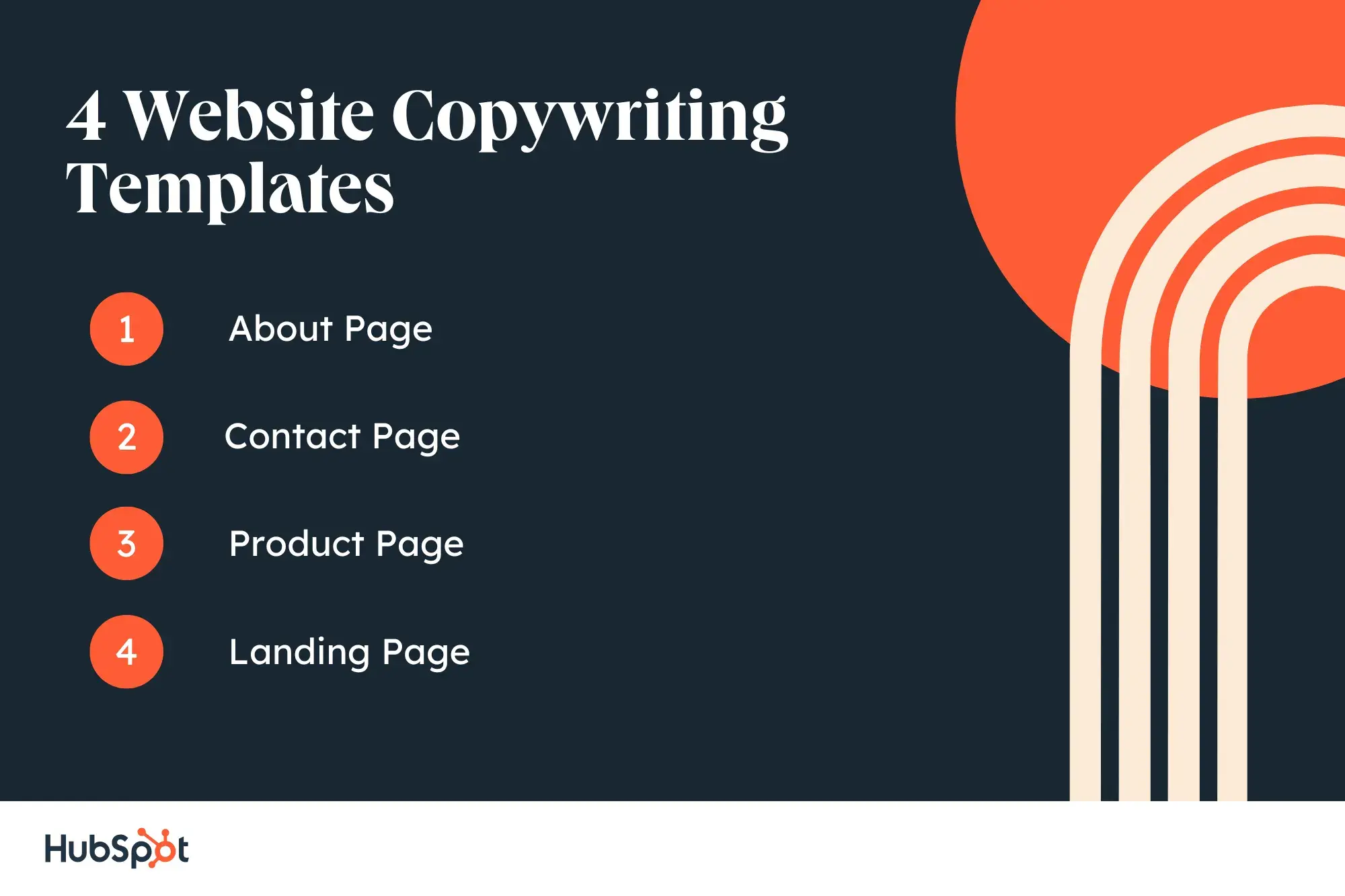
Copywriting for websites is about staying true to the business’s overall brand while making it easy for users to navigate the site. The copy that makes it to a site plays a huge role in setting the tone for a brand’s voice. When writing website copy, then, it’s critical you collaborate with key decision-makers for feedback to ensure your copy is on-brand.
There are so many different website components, so start with clarifying what type of page you’re writing for on the site. This may include, but is not limited to, the following:
- Homepage
- About Us page
- Contact page
- Product or Service category page(s)
- FAQ page
- Blog page
21. Homepage
Best for: Businesses looking to create a clear, engaging homepage that instantly communicates who they are, what they do, and why visitors should care.
Your homepage is your digital first impression — it needs to quickly capture attention, communicate your value, and guide visitors toward taking action. Clarity beats cleverness. Your visitors should immediately understand:
- What you offer.
- Who it’s for.
- How it benefits them.
- What to do next.
Use this website copywriting template to create a homepage that hooks visitors, builds trust, and drives conversions.
Headline: Clear, benefit-driven statement about what you do.
E.g., “Helping [Client Base] [What you help them do] with [How you do it].”
Subheadline: Expand on the headline with a sentence that reinforces your unique value.
E.g., “We [problem you solve] so you can [outcome you help them get].”
CTA: Primary action you want visitors to take
E.g., “Get Started,” “Book a Demo,” “Schedule a Call”
Social Proof: Logos of brands you’ve worked with.
Who We Are: Short three to five sentences about who you are as a company.
How We Help: List top three services or products and five-to-ten-word description
Social Proof: Testimonials or key stats.
Final CTA: Repeat the Call to Action from above.
22. About Page
Best for: Businesses wanting to create a compelling About page that builds trust.
Your About page is your chance to control the narrative and define what you want to be known for. That means using it to tell a story that builds trust and highlights your expertise.
Use this copywriting template to showcase your company story, mission, and values while highlighting what sets you apart.
[Company name] was founded in [Year] by [Founder’s name]. When [Founder’s name] began building [Company name] [he/she/they was/were] determined to [help, build, create] a company that offers [include the solution that the company problem solves for].
[Include as much or as little about the founders of your company. Sharing personable stories about how your company was founded is a great way to connect with readers and provide more insight into the people behind your brand.]
[Company name] helps people with [identified pain points of your buyer persona(s)]. To give our customers the best [product or service], we focus on [value proposition #1], [value proposition #2], and [value proposition #3].
[Company name] takes pride in working with people like you to provide quality [product/s or service/s] and exceptional customer service. We look forward to having you as a valued customer.
[Closing Signature]
Featured Resource: About Us Pages Guide + Lookbook
Get inspired by these awesome About Us page examples and learn how to make yours great, too.
23. Contact Page
Best for: Businesses that want a clean, effective Contact page that makes it easy for visitors to get in touch (hint: this should be EVERY business).
Your Contact page should be frictionless — visitors should immediately know how to reach you, when to expect a response, and any other key info they need. This is also an opportunity to build trust by setting clear expectations.
Use this copywriting template to write a contact page that makes getting in touch with you smooth sailing.
Headline: “Get in touch with [company name].”
SubHead: “Have a question? Looking for support? Use the form below to drop us a line, and we’ll get in touch. Prefer to email? Reach out to hello@yourdomain.com. “
Contact Form: First Name | Email Address | Message
Social Links
24. Product Page
Best for: Ecommerce and businesses selling physical or digital products that need a clear, high-converting product page.
A great product page goes beyond listing the features to show buyers what’s in it for them to buy. It shares the benefits, answers questions, removes doubts, and makes purchasing easy. So what’s the formula? Strong copy + compelling visuals + social proof = more sales.
Here’s a quick product page copywriting template to get you started:
Product Name
[1-2 sentences explaining why this product is worth buying]
Key Features & Benefits (Bulleted List Works Best):
- Feature #1: [What it does + why it matters]
- Feature #2: [What it does + why it matters]
- Feature #3: [What it does + why it matters]
Pricing & Options: [Clearly list the price, variations (size, color, package options), and any discounts.]
Specs: [Highlight any important information they’ll want to know about size, weight, etc.]
CTA: “Add to Cart,” “Buy Now,” “Get Instant Access”
Social Proof & Reviews:
“Best [product type] I’ve ever used!” – [Customer Name]
25. Landing Page
Best for: Businesses creating high-converting landing pages for lead generation, promotions, or sales.
A landing page has ONE job — to get visitors to take action. That means no distractions, no unnecessary info, and a laser-focused message that drives conversions. Whether you’re collecting emails, promoting a webinar, or selling a product, clarity and urgency are key.
Use this landing page copywriting template to get your copy up and online so you can start reaping the rewards:
Headline:
“Get [big promise] with [what you’re offering on the landing page].”
Subheadline: [Explain what’s included in the offer in one sentence.]
CTA (Above the Fold!): “Download Now,” “Sign Up Free,” “Claim Your Spot”
What You’ll Walk Away With:
- Benefit #1: [Why this offer is valuable]
- Benefit #2: [Why this offer is valuable]
- Benefit #3: [Why this offer is valuable]
Customer testimonials
Media mentions
“As featured in …” logos
Final CTA (Reinforce the Action!)
[Restate the value + CTA button.]
Want help figuring out what to say? Give our Landing Page content generator a try.
4 Sales Enablement & Informational Assets Copywriting Templates
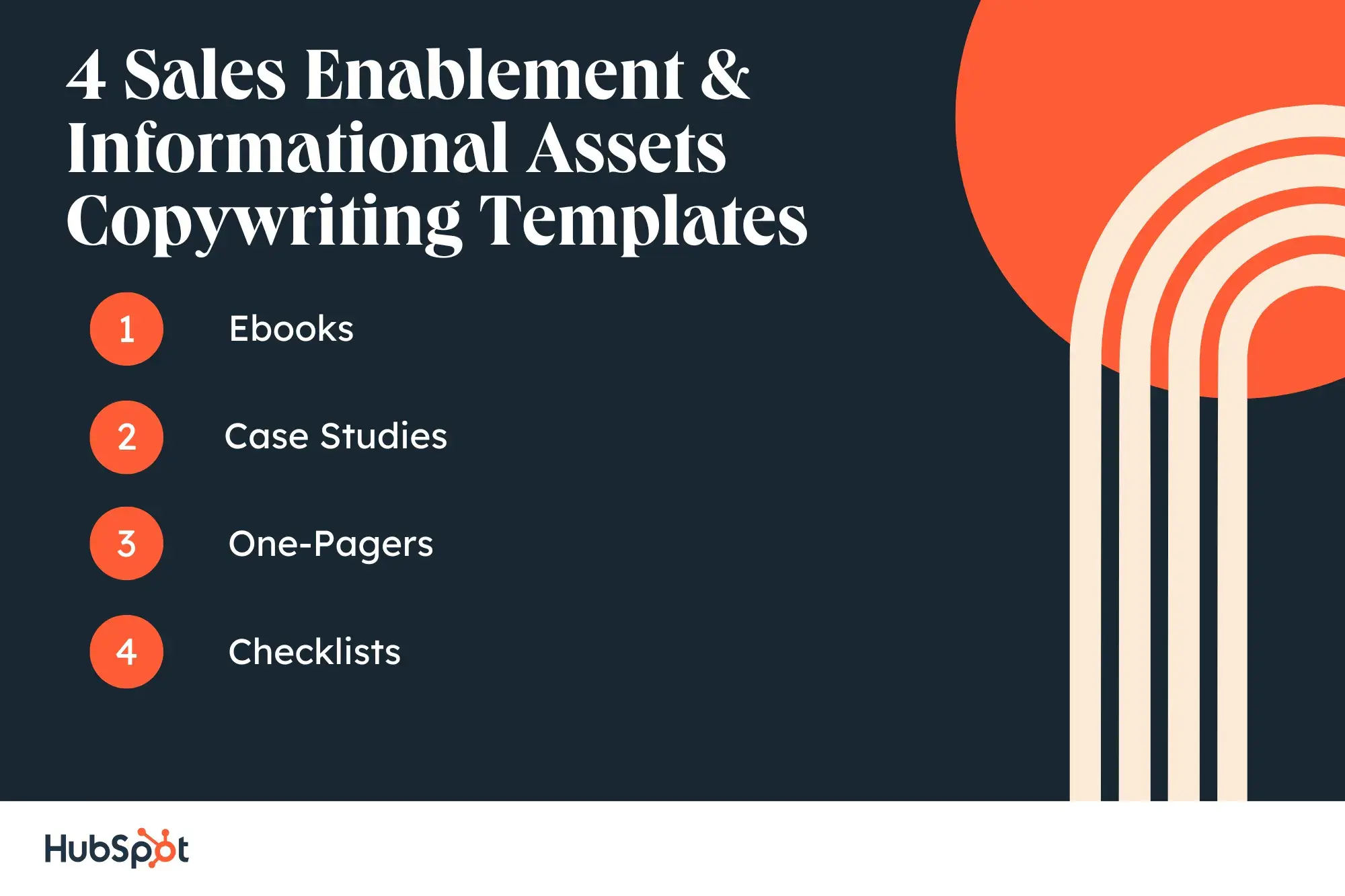
Creating compelling sales enablement and informational assets is key to educating prospects, building trust, and accelerating the buyer’s journey. But as I learned when I was starting out, it’s important to define what you want to cover ahead of time and what you want it to look like to minimize rounds of edits.
These assets provide valuable insights, answer common objections, and showcase real-world applications of your product or service — helping prospects make confident decisions. And I’ve pulled together a few copywriting templates for you to help you get started!
26. Ebooks
Best for: Businesses, marketers, and entrepreneurs looking to create high-value lead magnets that attract and nurture potential customers.
Ebooks are one of the most common types of content copywriters can create. Since they are meant to contain extensive information, it’s best to take the drafting process one section at a time.
Here’s an example of a general ebook template:
Cover/Title Page
[In addition to including the title of your ebook, you’ll also include your cover image. If this is a company resource, also add your company’s logo. If it’s a resource coming directly from an individual contributor, include the author’s name.]
Table of Contents
[The table of contents should clearly include a list of all the chapters or sections in the ebook, with the corresponding page numbers.]
Introduction
[Introduce the ebook topic with relevant background information and clearly state what the reader will gain from reading the ebook.]
Chapter/Section Pages
[This is the best part of your ebook because it’s where the core of your information will be for your readers. Break the writing into digestible paragraphs for better readability, and include relevant images to help break up the copy and fill excessive white space.]
Conclusion Page
[This is the closing of your ebook. The goal of your conclusion should emphasize what the reader has gained and any actionable steps they can use to put their new knowledge to good use.]
Optional pages may include:
About the Author Page
[This page helps readers learn more about the author. The background information can vary depending on the author’s level of comfort, but overall, the tone should be personable. This is also an opportunity to speak to the author’s credibility of the ebook topic.]
Interactive Pages
[Interactive pages can help keep your readers engaged. These pages may include quizzes, worksheets, checklists, etc. Including an interactive page in each chapter or section can help your reader feel they’re actively learning as they read.]
Resources Page
[You’ve most likely referenced tons of sources to help you get the final version of your ebook. Include the most important resources on this page for readers who may want to do further exploration on their own.]
Featured Resource: Ebook Templates
Let us take care of the design for you. We’ve created 36 free ebook design templates — available for PowerPoint, Google Slides, and InDesign.
27. Case Studies
Best for: B2B and B2C businesses that want to showcase real-world success stories and build credibility.
Potential customers often turn to case studies when researching a product or service they’re interested in buying. Case studies provide evidence of how a product or service has helped customers by identifying a pain point and providing a solution. They’re great resources for copywriters to show off their interview skills and boast strong statistics.
The key components of a case study are listed in the following copywriting template:
Executive Summary
[Provide a mini headline to grab your reader’s attention. Then, underneath this headline, write two to four sentences (under 50 words) summarizing the whole story, making sure to include the most relevant points of the case study.]
About the Client
[Share a brief description of the company you’re featuring in the case study. This should include the company’s name, when the company was founded, what the company does, and any other relevant information you think would be helpful for readers.]
The Challenges
[Write two to three short paragraphs describing the pain points your client was experiencing before they bought from you, the challenges this presented, and/or the goals they were trying to achieve.]
The Solution
[Write two to three short paragraphs describing how your company worked with your customer to find a solution to their challenges and implement a winning strategy. Use this space to describe how they are now using your product or service to solve their challenges from the previous section.]
Results
[Write a two- to three-paragraph conclusion to prove that your product/service impacted the customer’s business and helped them achieve their goals, especially if they’ve been able to quantify or speak to the ROI of their investment.]
Call-to-Action
[Use your CTA to lead your prospect to a landing page or a contact form. This will give you more information on who’s reading your case study and who’s interested in your company.]
Featured Resource: Case Study Template
Need help getting your first case study off the ground? Look no further. We’ve put together a comprehensive guide, complete with templates, designed to make the process a whole lot easier.
28. One-Pagers
Best for: Businesses that need a concise, high-impact asset to quickly communicate their unique value proposition.
A one-pager is a visually engaging, single-page document that highlights the key benefits, features, and differentiators of your product, service, or company. It serves as a quick reference guide for prospects, investors, or stakeholders who need a high-level overview without sifting through long-form content.
I always have fun creating them because I find it’s like putting together a puzzle and making it all fit. Usually, they’re one page front and back, so you have a bit more real estate to play with, but make sure you’re clear on what will work for you and your company before you get started with this copywriting template.
Headline focusing on the benefit to your audience:
“Helping [target audience] [what you help them do] with [how you help them]”
Section 1: Problem Statement
Clearly define the problem your audience faces, keeping it brief but relatable to your target market, and highlighting what’s at stake.
Section 2: Solution Overview
Introduce your product/service as the answer to the problem. If you need to describe what it is or the methodology, do so first, but illustrate with a graphic if possible. Then, use a short paragraph or 3-4 bullet points for clarity.
Section 3: Key Benefits
Highlight 3-5 major benefits that make your solution stand out, focusing primarily on outcomes or what people really want to feel or experience after they solve the problem.
Section 4: Social Proof
Include a testimonial, case study stat, or credibility marker.
“Companies using [Product Name] see a 40% increase in conversions in just 3 months."
Section 5: Call-to-Action
Tell your reader exactly what to do next, and use a strong, action-driven CTA.
29. Checklists
Best for: Businesses and marketers looking to create actionable, easy-to-use resources for their audience.
I love a good checklist — in fact, I used one as my first lead magnet and still use a version of it today! Why are checklists so awesome? They’re usually easy to follow, actionable, and break down complex chunks of information into simple steps.
And, checklists are good for more than lead magnets. They’re also fantastic for onboarding materials, blog resources, sales enablement, and even internal processes and workflows.
Use this copywriting template to create your checklist.
Title: Describe what’s in it for the user:
“How to [do thing] in [X] easy steps.”
“The Only Guide You’ll Ever Need to [What it’s for]”
Introduction:
- 1-2 sentences explaining why this checklist is useful.
- 1-2 sentences introducing yourself and your company.
- Before you dive in (what to do or know).
- How to get in touch with questions or if you get stuck.
Your Checklist
Phase 1 (if needing to be grouped into phases, otherwise go right into the steps)
- Step 1 [Task Title] - Description + What happens if you skip this (optional).
- Step 2, 3, 4 [Task Title] — run through entire process.
Phase 2, 3, 4, etc. (continue until process is complete)
Wrap Up
- Reinforce why the checklist matters.
- Offer a next step and CTA.
- Reiterate how to get in touch.
3 Copywriting Templates for Other Types of Communications
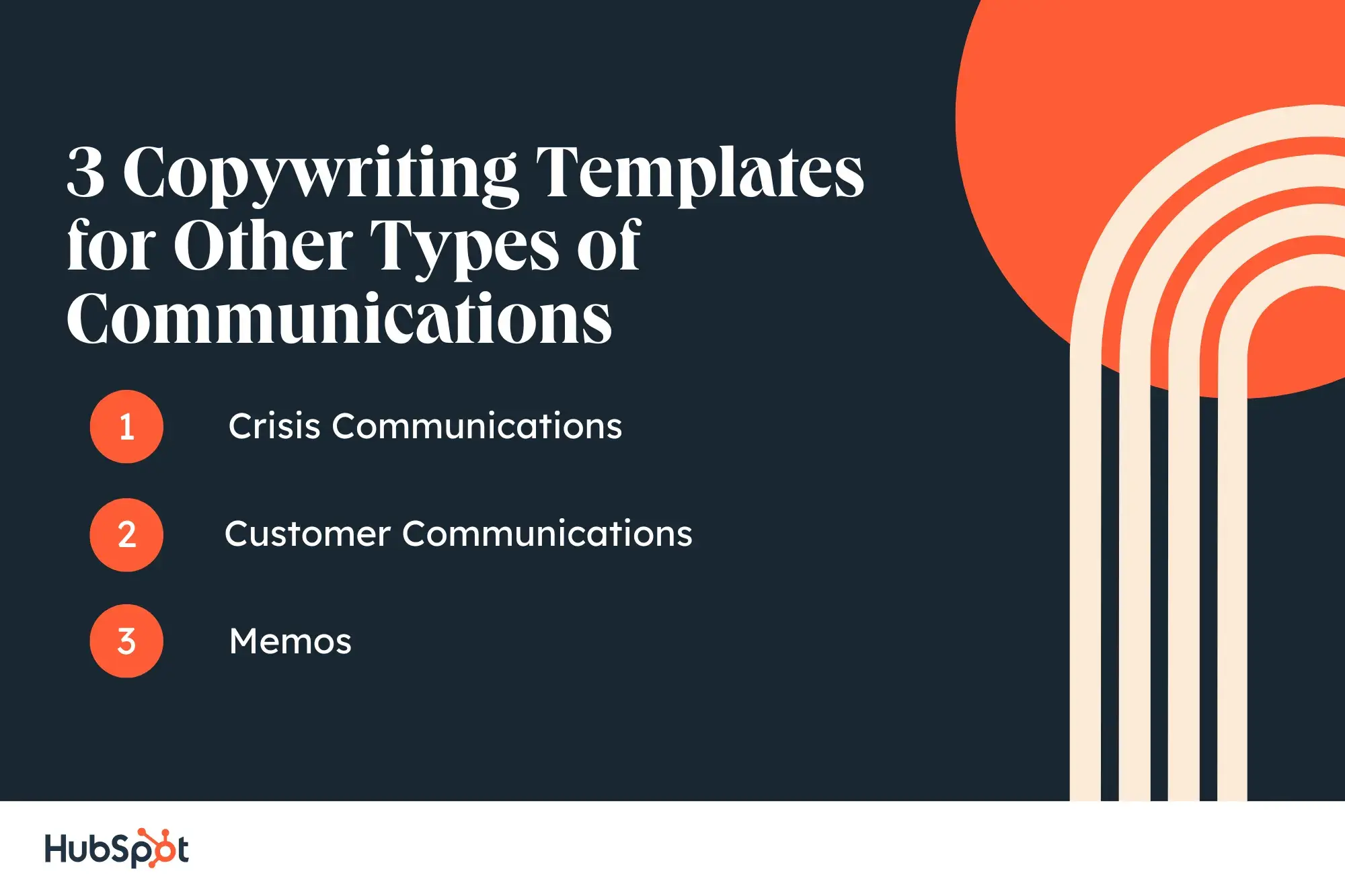
Not all communication is about marketing — sometimes, clarity, precision, and tone are even more critical in high-stakes or internal messaging. Whether you’re handling a crisis, addressing customers, or sending internal memos, the right words can build trust, reduce confusion, and maintain professionalism.
I’ve compiled a list of some of the most important communications you’ll need, even if they’re not as common as the items listed above.
30. Crisis Communications
Best for: Businesses and organizations that need to respond swiftly and effectively during a crisis.
If you’ve been tasked with writing for a crisis, you’ll need to be especially attentive, as this type of content usually addresses serious or sensitive matters.
Developing clear messaging for crisis communications requires a special level of detail. You’ll want to convey an empathetic tone that appropriately addresses the crisis. It’s a good idea to collaborate with team members to ensure the overall message is properly aligned with your company’s brand.
You may end up creating several pieces of content for a crisis, including blog posts, social media posts, emails, an announcement from the CEO, a newsletter, etc. The following copywriting template is an overview of what to address:
An Overview of the Crisis
[Clearly identify the crisis and share detailed background information on what has occurred. If you’re addressing something that includes individuals, use discretion. Check with your company’s legal team to ensure all documents follow proper protocol.]
Plan of Action and Timeline
[Create a plan that includes a timeline of how the events have developed and how your team will be addressing the issue(s) at hand. Consider the types of questions media outlets could ask and write prepared statements the company, leadership, and general team members can use to respond.]
Contact Information
[Share the best contact information people can use to learn more about what’s happening and ask any additional questions. This could be your company’s PR team or agency or an internal customer service or support team.]
Featured Resource: Crisis Management and Communication Kit
The templates in this crisis communication kit will help your management team prepare for handling a crisis and responding to the media during a difficult time. Having clear lanes allows your team to operate effectively during times of crisis.
31. Customer Communications
Best for: Companies that need to update customers on important changes, policies, or service adjustments.
Customer service is an essential part of any business. Writing to better understand and communicate with your customers is necessary to foster stronger connections.
Creating buyer personas is one of the best ways to better understand your customers. Buyer personas are semi-fictional representations of your ideal customers based on data and research.
Use this copywriting template outline to begin developing your buyer personas.
Background
[Create a background for your persona that best exemplifies the types of customers you have. This can include their job title, career path, and family life.]
Demographics
[Include age, gender, salary range, location, and anything else that best represents your customer persona.]
Identifiers
[Identifiers can include your persona’s general demeanor or communication preferences. This type of information is vital because it helps businesses build a more curated approach for their customers.]
Featured Resource: 61 Templates to Help You Put the Customer First
To help you foster better relationships with delighted customers, we put together this collection of templates — buyer persona templates, email templates, and survey templates — that put the customer first.
32. Memos
Best for: Internal teams and leadership who need to communicate important updates efficiently.
A memorandum, or memo, is used to address internal communications within an organization. Think about the type of message you want to communicate.
A memo is likely a good idea if you’re sharing minutes from a meeting, detailing new policies and procedures, or communicating anything people may need to reference.
Memos tend to be longer and more formal than emails (although you may attach a memo to an announcement email) and may be formatted according to your company’s style guidelines.
Use this general memo template to get started.
Memo: [Memo Title]
Date: [Date of sending]
Memo To: [Individual(s), Department(s), or Organization(s) the memo is being sent to]
From: [Your Name, or the Name of the Department on whose behalf the memo is being sent]
Subject: [Enter a brief, 5-to-10-word subject line to describe the memo’s purpose]
Introduction
[Provide an executive summary of this memo in one to two paragraphs, highlighting the change that’s happening, when it’s effective, and what the key takeaways are for the memo recipient.]
Background
[Explain the background for this organizational change in one to two paragraphs.] Some questions to answer in this section might be:
- Why was this idea pursued in the first place?
- What data, research, or background information informed this decision?
- What are the intended results of this organizational change?
Overview and Timeline
[Describe the organizational change in clear, direct language.] Specify the following:
- What will be changing?
- Who will be responsible for driving the change?
- When will the changes go into effect?
Closing
[Close things out with a final note on]:
- Why employees should feel excited and motivated about this change.
- Where and when employees should submit questions, comments, and/or concerns.
Featured Resource: 4 Free Memo Templates
We’ve drafted up four free memo templates for general, organizational, financial, and problem-solving updates. We've also included a best practices checklist for you to review before sending your memo out.
Adding these templates to your marketing arsenal can help you save time during your drafting process. Copywriters are shifting gears from blogs to case studies to emails all the time.
28 Call to Action Copywriting Templates
A call-to-action (CTA) is an image or line of text that’s included in different types of content to encourage leads and customers to take action. In short, you want someone to click your CTA to carry out the desired action.
Add CTAs to blogs, emails, ebooks, and anywhere else you want a lead to complete a certain action to push them to the next stage of the buyer’s journey. Instead of listing out all the different types of CTAs here, I’ll do you one better — here’s a link to 28 of the best CTA copywriting templates:
Featured Resource: CTA Templates
These resources will empower you to create an impressive CTA strategy by helping you understand how they work across different mediums, while also providing you with the means to create them for your own website.
Should you use copywriting templates?
If you’re a copywriter, your job isn’t just to write — it’s to find the most compelling way to present information. Whether it’s an email, a web page, or an ad headline, the challenge isn’t just what to say but also how to say it in a way that guides the reader to the next step.
Copywriting templates are controversial because some people in my circle say they make everything homogenous. I have a different take — I see copywriting templates as loose frameworks that are flexible and customizable as they give you a simple starting point to avoid that blank page and blinking cursor I mentioned above.
In fact, I’ve developed my own set of website copy templates to speed up client work, streamline my process, and eliminate guesswork. I teach them to other copywriters in my course — because my whole goal is to help you write quickly and take action, which is exactly where those templates come in handy.
Speaking of controversy, let’s talk about the elephant in the room — AI. It’s becoming less controversial to use as a brainstorming tool to generate ideas and help you develop that first draft much more quickly. There are a few downsides to relying on it exclusively:
- AI looks a lot like … AI. It’s like AI has taken what it perceives as fun conversational human language and turned it into rigid rules. I rewrite and reformat what AI makes so it sounds like me. And, of course, I ditch most of the emojis :)
- You need to define your input AND your output ahead of time. Start by answering the five questions I identified at the beginning of this article, and plug those into your AI tool along with the template you want. That will help you get the output you want … and you’ll be able to coach your AI on what you want it to create more of.
Best Copywriting Formulas for Your Templates
Imagine a slide. You’re sitting at the top, and once you push off, there’s no stopping. Now, I want you to assume every potential reader is sitting at the top of the slide, and it’s your job to get them down.
Every line of copy has one job — to get your reader to either read the next line or take action. How you do it depends on several factors, so I’ve pulled together four of the best copywriting formulas to use in your new templates.
BAB Formula
In copywriting, the BAB formula is a popular tool. The acronym stands for before-after-bridge. It’s a device used to appeal to the wants and needs of your audience. While this tactic is particularly effective in email marketing, it has its place in every avenue of copywriting.
To start, you want to focus on the before. This section is typically used to highlight problems or pain points for your audience. Your goal is to make them see themselves in the scenario. Immediately following this, you want to highlight the after. Use this section to craft what life will look and feel like once you resolve their issue.
Lastly, introduce the bridge. You’ve shown your audience a problem. You’ve demonstrated what it will look like when it’s fixed. Now, how will you get there? The bridge should merge your before and after. Typically, this is when a company would introduce its products or services. However, if you’re focused on creating a piece of content, you might use this section to propose an idea or advice.
AIDA Formula
Another popular formula used by copywriters and marketers is AIDA. The acronym is for Attention, Interest, Desire, Action.
First, you want to get your audience’s attention. This will typically be done with a headline. Make a compelling statement. “What Never to Eat on an Airplane” and “Why You’ll Never Be a Millionaire” are two examples.
Once you get their attention, you have to keep their interest. Goldfish are said to have an attention span of nine seconds — pretend you’re writing for a goldfish. In this section, you might start by describing an interesting story. As you build out the copy, make sure this section is easily digestible for the high percentage of readers who will scan the information instead of reading it word-for-word.
Next in the AIDA formula is desire. This section is all about the details. Focus on the pain points of your reader. Are they missing a product or service to make their lives easier? Are they missing the information they need? As you develop desire in your reader, include any features for a product or service. Mention benefits or a solution if you create a blog post or article. It would also be beneficial to add any testimonials if available. Your copy should emphasize how your reader’s life will positively change with this product or information.
Lastly, the AIDA formula wants to drive your reader to act. It calls for you to end your copy with a CTA. Common CTAs are “BUY NOW” or “SIGN UP HERE!” For a blog post, your CTA might direct them to comment on the post or share it with their peers.
PAS Formula
You’ve likely heard the quote, “When life hands you lemons, make lemonade.” Now, imagine the lemons bringing a swarm of fruit flies because you have nowhere to store them. After you learn, you can make lemonade. That’s what the PAS copywriting formula is.
PAS stands for Problem, Agitation, Solution. First, present the problem. During this step, you want to empathize with your reader. Put yourself in their position and present the issue as if you’re experiencing it yourself. Once they are aware of it, make it worse.
Step two of the PAS formula is to agitate the problem. Think of how your reader’s problem could worsen, and tell them. Make it so they want to solve the situation now before it gets worse.
The final step in this formula is to present the solution. Give them a way out. This is when you introduce your products, services, or advice.
The 4Ps Formula
In this approach, you’ll have to promise, picture, prove, and push. This method calls you to grab your reader’s attention by making them a promise. You could easily alienate your target audience by making false claims, so ensure your promise is accurate. It is a promise you will have to keep.
Once you give the promise, paint a picture. You might want to throw a million adjectives around, but descriptions have different meanings to different individuals. “Exceptional craftsmanship” might mean one thing to you and another to me. Instead, use specific details that demonstrate the craftsmanship. Using details and examples helps create a clearer image for your audience.
Now, it’s time to prove yourself. You made a promise and created an image in your reader’s head. How do they know it’s true? In this section of the 4Ps formula, present your evidence. When selling a product or service, show customer testimonials or before-and-after images. For other content types, include data and statistics to bolster your claim. Once you’ve painted the picture in your reader’s head, the proof will solidify it.
At this stage, you’re ready to introduce your reader to your CTA. Tell them exactly what you want them to do. Download this PDF. Sign up for a free trial. Once you have made a promise, painted a picture, and proved your claim, push your reader to act.
'A' plus 'B' equals copywriting.
Copywriting isn’t always easy. If you’re responsible for writing compelling copy across different formats, you know the challenge of finding fresh ways to say the same thing — over and over again.
In my opinion, that’s why copywriting templates and formulas are so popular — they speed up the process without sacrificing creativity. They give me a solid starting point, so I’m never stuck staring at a blank page.
And if you’re just starting out, templates do more than save time — they help you understand what good copy looks like, what elements matter, and how to structure your messaging effectively. They give you a place to start, so you can focus on communicating what you need to say.
When the words aren’t flowing, don’t force it. Use this as a resource to jumpstart your process, spark new ideas, and get back to what you do best — writing copy that works.
Editor's note: This post was originally published in December 2020 and has been updated for comprehensiveness.
Copywriting
-Jun-03-2024-08-22-09-8305-PM.png?width=112&height=112&name=Untitled%20design%20(25)-Jun-03-2024-08-22-09-8305-PM.png)

